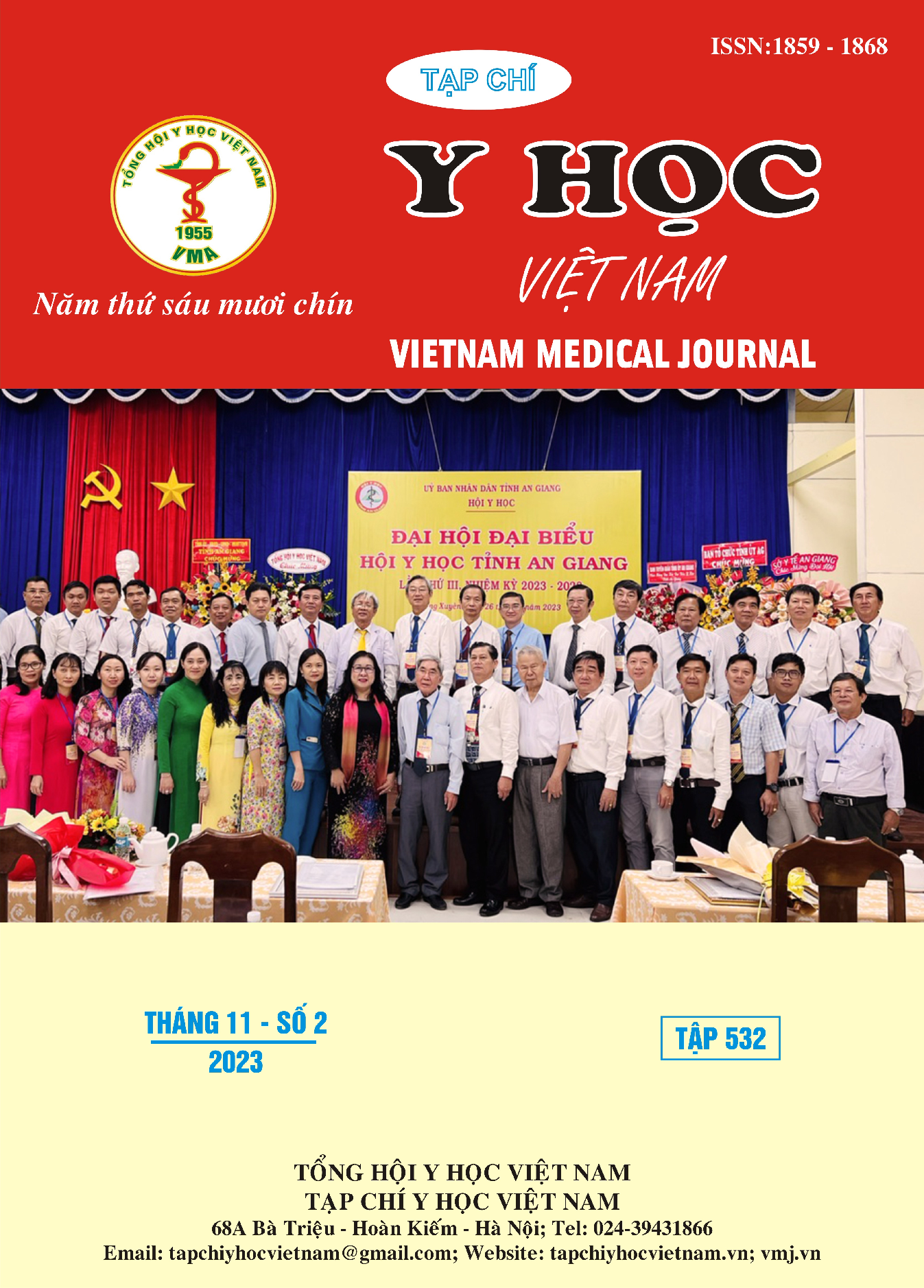ELECTROGASTROGRAPHY AND SOME RELATING FACTORS IN PATIENTS WITH TYPE II DIABETES HAVING FUNCTIONAL DYSPEPSIA
Main Article Content
Abstract
Objectives: To evaluate the gastric myoelectrical activity and associated factors in patients with diabetes mellitus type II with functional dyspepsia. Subjects and methods: A descriptive cross-sectional study recruited 42 patients diagnosed with functional dyspepsia based on ROME IV criteria: 21 patients with type II diabetes (Diabetes group) and 21 patients without diabetes (Control group) from October 2022 to July 2023. Results: The mean age was 55.8 ± 9.0. Bloating, belching, and regurgitation were the most common symptoms. The percentage of normal gastria was highest in both groups preprandially (77.0% in diabetes group; 80.0% in control group) and postprandially (76.9% in diabetes group; 84.6% in control group). Dominant frequency (DF), dominant power (DP), percentage of normalgastria and brachygastria did not significant differ between two groups. There was no significant correlation between age, sex, disease duration, HbA1C, glucose and DF, DP. Conclusion: There was no significant difference in gastric myoelectrical activity between functional dyspepsia patients with and without diabetes type II. Age, gender, BMI, disease duration, HbA1c, serum glucose concentration had no correlation with EGG metrics.
Article Details
Keywords
: Electrogastrography, diabetes mellitus type II, functional dyspepsia.
References
2. Chen J.D. and McCallum R.W. (1993). Clinical applications of electrogastrography. Am J Gastroenterol, 88(9), 1324–1336.
3. Chen J.D., Richards R.D., and McCallum
R.W. (1994). Identification of gastric contractions from the cutaneous electrogastrogram. Am J Gastroenterol, 89(1), 79–85.
4. El-Salhy M. and Sitohy B. (2001). Abnormal gastrointestinal endocrine cells in patients with diabetes type 1: relationship to gastric emptying and myoelectrical activity. Scand J Gastroenterol, 36(11), 1162–1169.
5. Hata N., Murata S., Maeda J., et al. (2009). Predictors of gastric myoelectrical activity in type
2 diabetes mellitus. J Clin Gastroenterol, 43(5), 429–436.
6. Saeedi P., Petersohn I., Salpea P., et al. (2019). Global and regional diabetes prevalence estimates for 2019 and projections for 2030 and 2045: Results from the International Diabetes Federation Diabetes Atlas, 9th edition. Diabetes Res Clin Pract, 157, 107843.
7. American Diabetes Association (2018). Standards of Medical Care in Diabetes—2018 Abridged for Primary Care Providers. Clin Diabetes, 36(1), 14–37.
8. Rome IV Criteria. Rome Foundation,
, accessed: 07/10/2023.


